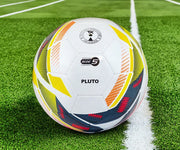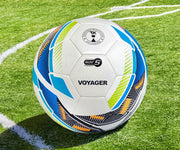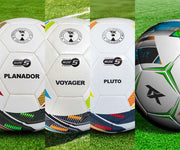Football is one of the most popular sports in the world. But even so, many people, especially those new to following the sport or occasional viewers, don’t know a lot about the game's basic rules. That you have to kick the ball and score a goal is something almost everyone is aware of. But how 11 team players come into the mix, what they do, and how they contribute, is a mystery to most amateur viewers. So today, let’s focus on soccer numbers and positions to make that mystery easier to understand.
For people who have been following the game obsessively (or for some years), soccer numbers and positions, their alternatives, and all the lineups and roles, can be recalled on the tip of their fingers. But for the newbies, this information can feel a little overwhelming. Don’t worry, though. With our guide, you’ll be ready to watch football with an entirely new level of mindset and understanding.
Major Soccer Numbers and Positions
At any moment in a game, the total number of players in a soccer team is 11 from each team on the field. And if a team wants to bring on players from the bench, they have to sub-off someone from the field to accommodate this.
Each team can make up to 5 substitutions during a normal 90-minute game. And every team assigns specific soccer numbers and positions to all players, including substitutes
What are the 11 Positions in Football?
Goalkeeper
The last line of defense in any team, Goalkeepers have the most difficult task of all - saving the ball from landing at the back of the net. Just think about it, anyone else, including goalkeepers themselves, can go and score a goal in the opponent’s net. But when it comes to saving, once the ball has crossed the defenders, there’s only the keeper to beat. The alertness, presence of mind, and sharpness of a goalkeeper have to exceed everyone else’s to ensure the goal is saved. That’s what the team relies on, and trusts the keeper to do as well.
Additionally, these keepers follow different rules from regular players, allowing them to touch and hold the ball in their arms while inside the penalty area. This duality makes their role both easier and more challenging, as they must stay athletic enough to dive and save the ball from crossing the goal line, regardless of their position within the penalty area.
Some of the best goalkeepers of the last few decades, who have more than fulfilled this role include Manuel Neuer, Oliver Kahn, Gianluigi Buffon, Tibo Courtois, and Iker Casillas.
Defenders
i- Right and Left Backs
When it comes to soccer numbers and positions, RB and LB, also known as outside defenders, have a complex role to play. These players position themselves on the left and right wings of defense and demonstrate excellent stamina, athleticism, and game awareness.
Their main responsibility is to control the opponent’s attacking wingers. And these wingers include players like Cristiano Ronaldo, Mo Salah, etc. Imagine being responsible for the wing with any of these players on its side.
Hence, RBs and LBs must be extremely sharp, have quick feet, and play with the utmost physicality without getting penalized. These defending wingers actively assist their team’s forward wingers in creating counter-attacks and scoring goals.
ii- Center Backs and Sweepers
These are known as the central defenders, and they serve as the last line of defense before the keeper. Their job is to stop the ball from entering the penalty area and keep it with the midfield. They’re positioned on either side of the penalty area, close to the keeper. They intercept passes, tackle attacks, block shots, and maintain the offside trap to prevent opponents from dominating, especially during counter-attacks.
Center-backs focus less on offense but work to maintain possession and create counter-attacks. Their height, build, and defensive skills make them impactful in the opponent’s penalty area, especially for scoring headers.
Some of the most notable central defenders are Sergio Ramos, Carles Puyol, and Roberto Carlos.
Midfield
When speaking of soccer numbers and positions, it’s worth mentioning that midfield is the most important role of all. This is the center that connects the defense with the attack.
i. Defensive Midfielders
DMs need to be sharp, smart, and fast on their physique. Their major role is stopping the opponent, taking back possession, and getting the ball into the opponent’s half. They also need to be precise and efficient when it comes to shooting since they’d mainly be tasked with launching long balls into the opponent's penalty area, and be responsible for free kicks, and even corner kicks.
Their passing and shooting prowess needs to have pinpoint accuracy to ensure maximum impact. And they need to be extremely creative to make sure this accuracy doesn’t go to waste.
ii. Attacking Midfielders
Attacking midfielders are perhaps a few of the most creative, gifted, and skilled players on the soccer field. They’re responsible for controlling the offense and mostly decide the pace and speed of their team’s attacks. Therefore, the teams with the best midfielders are also often the most successful, i.e. FC Barcelona, Real Madrid, etc.
Players in these positions sprint the most throughout the game’s duration, hence they need to possess excellent stamina and skills to perfectly execute their plans and tactics. Moreover, their passing accuracy and dribbling need to be top-notch to ensure the opponents stay one step behind at all times.
iii. Central Attacking Midfielders
These are versatile players, whose role changes from being a midfielder to becoming a striker, according to their team’s needs. CAMs need to have excellent dribbling and shooting skills since they mostly find themselves in positions where they’re surrounded by opponent defenders through which they have to defend possession. Lionel Messi, one of the greatest players in the world, is a CAM.
Wingers
Just like defensive wingers, there are also two attacking wingers placed on either side of the field’s touchlines. These players act as forwards or wingers, depending on the team’s formation and tactics during any game. Their main responsibility is creating space for the team to attack, creating scoring opportunities, and also scoring goals themselves.
Opposing teams need to have a defensive winger to cover this player at all times. And your winger’s job is to deceive the defensive winger to get through on goal. These wingers create a lot of chances to assist their teammates, and most of the counter-attacks in football come from the help of wingers and their skillful execution of their team’s tactics.
Striker/Forward
The striker's soccer position is essential since they’re the main line of attack for the opponent to stop and focus on once the ball is in their half. These players need to be all-around shooters since their main objective is to score goals.
Forwards aren’t required to run back in the defense to get possession back, however, few of the most athletic and skilled strikers carry out this responsibility anyway, just to help out their teams.
So there you have it, all the soccer positions and numbers that you need to know as a football follower. Each player carefully takes on and fulfills their role's unique responsibilities through deliberate selection and training.
Moreover, if you’ve watched enough football, you’d know that each player in their respective role has the physique and skills to match the role’s responsibilities. Players like Buffon, Casillas, and Neuer had the athletic build and alertness required of a first-class goalkeeper. While Puyol, Lahm, Kroos, Scholes, Gerard, Zidane, and Cafu, all had the skills, mindset, and intelligence to fit their defensive, midfield, and attacking roles perfectly.
This is all from TX to guide you through soccer numbers and positions. If you want more information or need to get more guidelines, visit us at https://txfootball.com.au/ .







